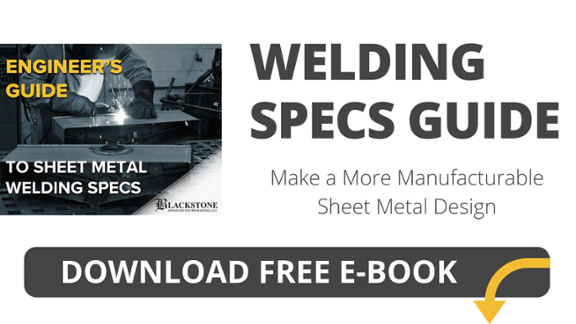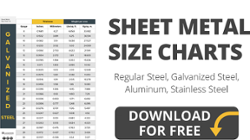
Has your manufacturer ever handed you a finished product that’s an eyesore or, even worse, poorly put together? It may be due to pesky weld defects.
Twists and turns are common when it comes to welding metal. Check these common welding afterthoughts for signs your vendor is not prepared to help your project reach its potential.
4 Common Weld Defects in Your Sheet Metal Design
The four common weld defects you should be most concerned about in sheet metal design are:
- Porosity
- Overlap
- Distortion
- Lack of fusion
1. Porosity
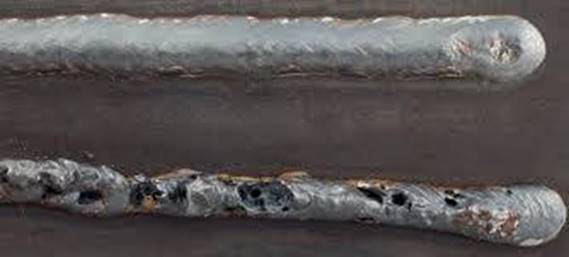
Let us translate: Porosity = gas bubbles. Porosity occurs when shielding gas becomes trapped within the weld and releases through the weld after it hardens. The release of the gas leaves tiny holes in the weld. Porosity is especially destructive in metal inert gas (MIG) or stick welds.
Consequences of weld porosity:
- Cracks both visible and internal
- Weakened weld joints
How to prevent weld porosity:
- If using multiple metal types, make sure you’re specifying similar ones.
- Have a certified welding inspector use X-rays and ultrasound to check for holes.
2. Overlap
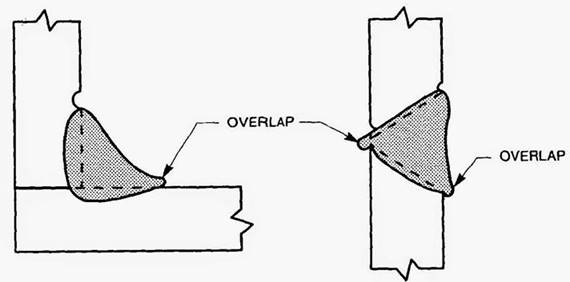
Overlap is an excess of weld metal beyond the weld root. This is a type of weld discontinuity, not necessarily a weld defect. Weld overlap frequently occurs with fillet or butt welds (common weld types in metal fabrication). This may be due to insufficient heat application.
Consequences of weld overlap:
- Little to no fusion of the pieces
- Concentrated stress under load
How to prevent weld overlap:
Use a metal type and grade more agreeable with high-heat conditions
- Find a more skilled, experienced welder
3. Distortion

Distortion can result when the parent metal being welded on warps due to excessive heat created by the welding process. This usually occurs on thinner gauge sheet metals as they lack the surface area to dissipate the heat. It also can occur when creating longer welds, due to there being an extended length of time when the metal is exposed to heat.
Consequences of weld distortion:
- Warped metal isn’t structurally sound
How to prevent weld distortion:
- Avoid stainless steel, since it’s especially prone to shifting position during a weld
- Use a more weldable metal type and grade so less passes are necessary
- Stop specifying so many welds!
4. Lack of Fusion
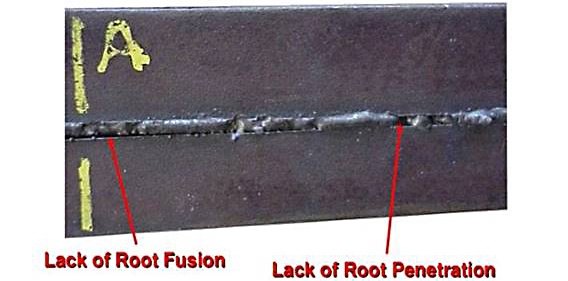
This occurs when the parent metal and the weld metal do not completely adhere to each other. Lack of penetration occurs when a weld does not begin at the root of the weld groove. These usually occur due to poor welding technique -- perhaps an incorrect angle, excessive speed, or insufficient arc length.
Consequences of a lack of weld fusion:
- Connection won’t be solid or long-lasting
How to prevent a lack of weld fusion:
- Find a more skilled, experienced welder
- Use a thinner piece of metal
Leave No Room for Error
The ideal way to prevent weld defects is to involve your manufacturer in the early going. Making sure you’re giving your vendor the right design specifications will reduce the potential for welding errors.
You’ve been warned: Don’t make the welding portion of your manufacturing process an afterthought!


